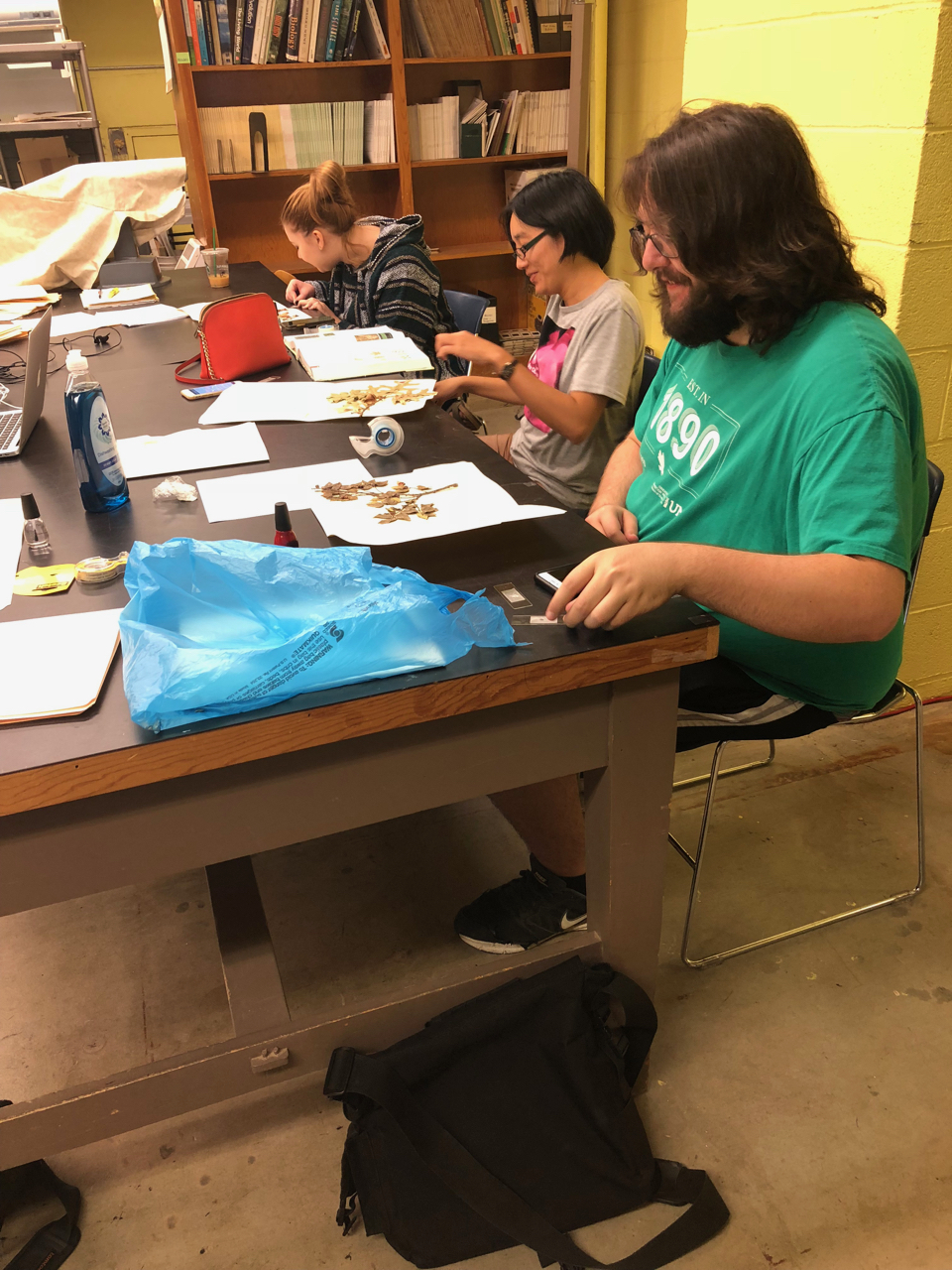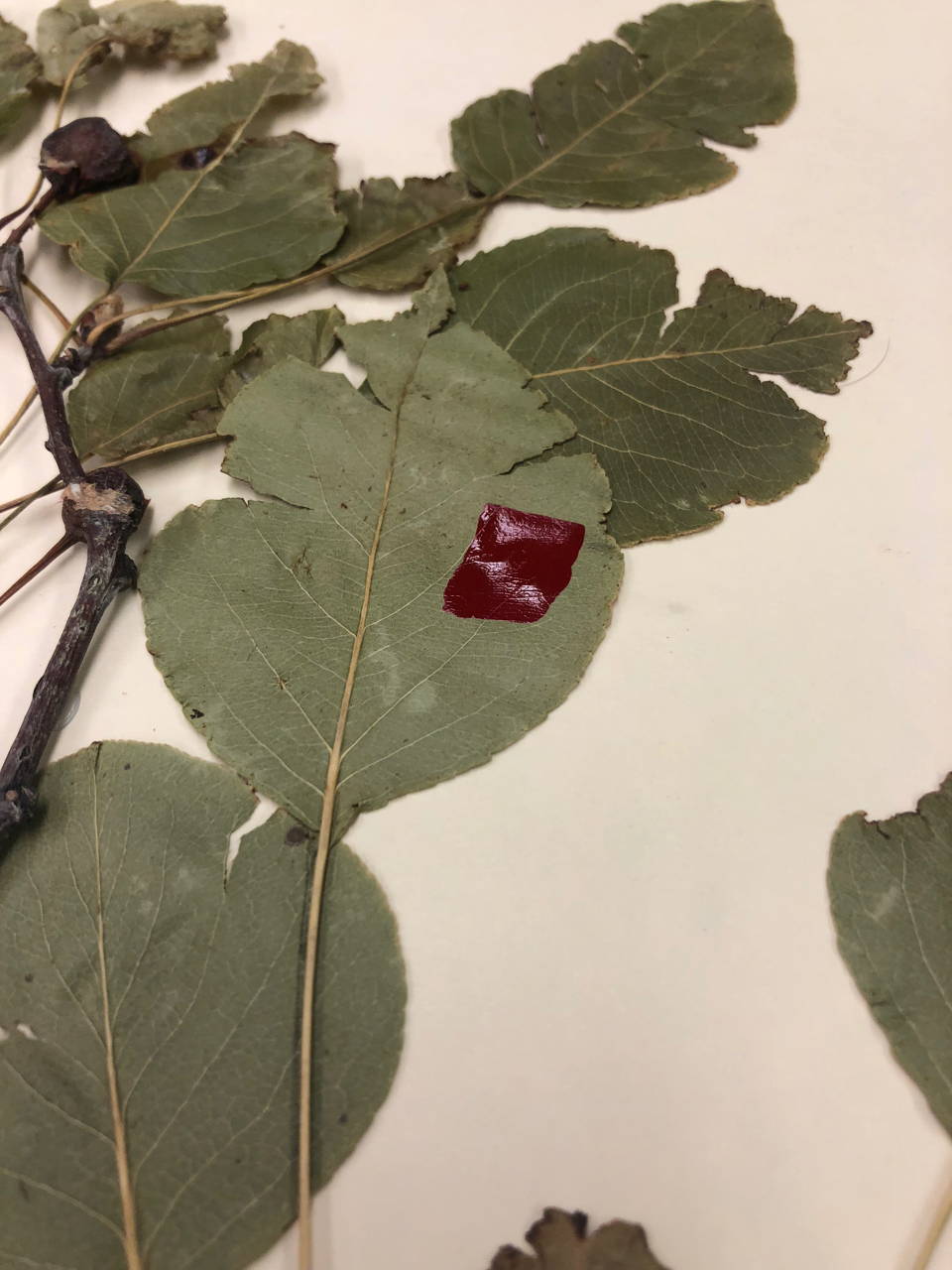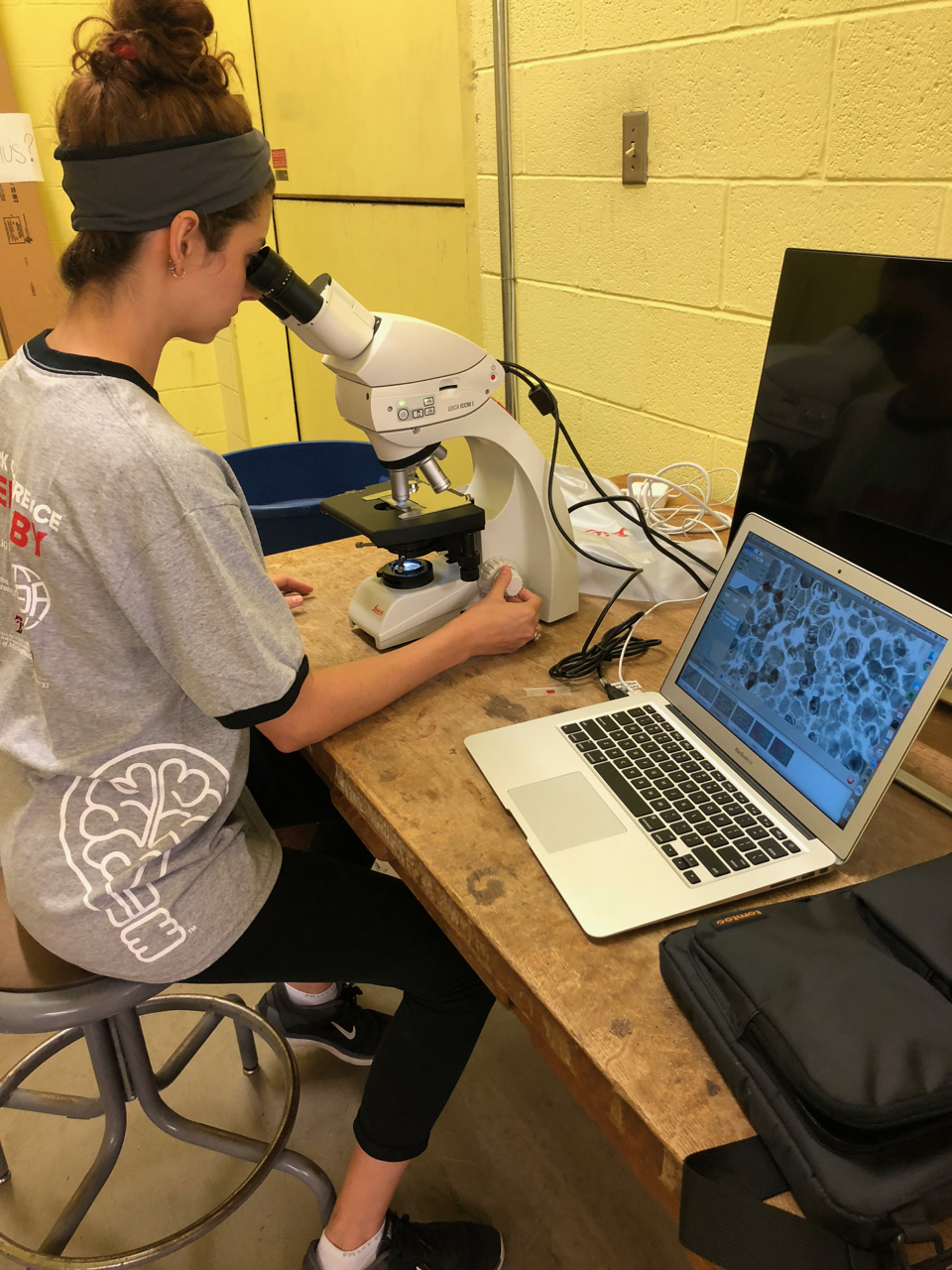Recording Stomata
We are beginning a new project in the herbarium that uses our collection to study the effects of elevated carbon dioxide on plants in the Guadalupe Mountains National Park (GMNP). The Reed Herbarium at TTU has over 2000 specimens from more than 500 species collected when the park first opened in 1974. This collection will provide us with a window into the physiological stress experienced by plants almost 50 years ago.
Stomata are pores on the underside of leaves and function to let the plant “breathe” carbon dioxide. It has been shown that the density of stomata on leaves is correlated with carbon dioxide in the atmosphere– with more carbon dioxide the plants do not need to breathe as much, so they develop fewer stomata.
In the dry environment of the GMNP, stomata also function to limit water loss. As a result, there may be more physiological pressure to keep the number of stomata low. Using the herbarium collection, students will be able to test whether the expected reduction in stomata over the last 50 years occurred in the GMNP.
This week, undergraduates Zach and Lauren began testing a protocol to efficiently measure stomata on herbarium specimens, which many may remember from high school biology: nail polish! When the polish is painted on the leaves and let to dry, it can be removed using double-sided tape and the impression of stomata can be viewed under a microscope. Zach and Lauren will need to adapt their techniques to a variety of leaf types.
 |
 |
| Madeline, Yanni, and Zach paint nail polish on herbarium specimens |
Closeup of nail polish on underside of leaf |
 |
 |
| Lauren examines stomata under the microscope |
Impression of stomata at 10x magnification |